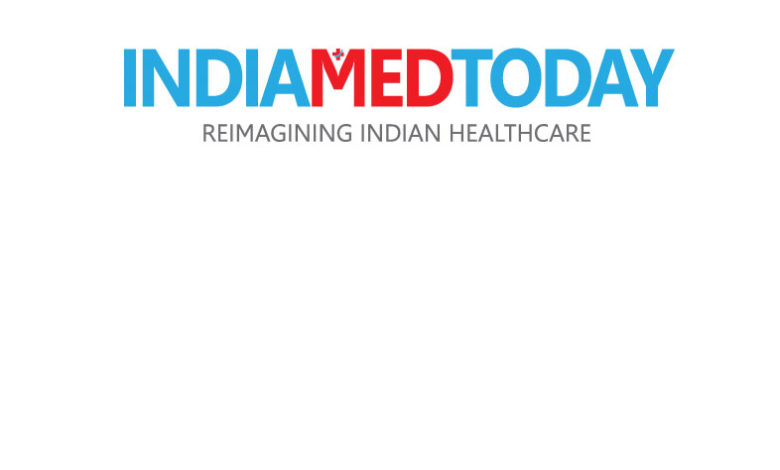US MNC lobby once again pressurizes GoI on rolling back Price Caps on Stents before PM Modi’s visit to US

The Indian Medical Device Industry is hopeful that PM Modi will not compromise to Safeguardhealthcare interest of masses at large and Ayushman Bharat Modicare Programme
‘Make in India’ cannot and must not be seen as making India attractive only to foreign manufactures and that too at the cost of domestic ones. You can’t have Red Carpet for foreign guests and Red Tape for struggling domestic manufacturers.
New Delhi, 20th Sep, 2019: In their constant bid to put extreme pressure on Govt. of India to roll back prices of stents, a delegation comprising of US Medical Device Multinationals along with US Ambassador Kenneth I Juster met the Commerce and Industry Minister, Shri. Piyush Goyal, pitching for MNC lobby’s interest, and seemingly attempting to influence internal Indian policies away from affordable patient care ahead of PM Modi’s visit to US.
Once again US multinationals are putting extreme pressures on GoI through the US embassy to dilute price caps and replace it with soft trade margin caps so that they can enjoy the same 200% -300% profit markups from the patients in India.
“Apparently, even last year their attempts to pressurize Commerce Minister Mr. Suresh Prabhu prior to & during his visit to US to attend USTR failed as Mr. Prabhu did not relent to MNC lobbying pressure to protect their profiteering & decided to protect healthcare interest of common masses & safeguard our Ayushman Bharat Modicare programme by not rolling back Price Caps on Stents.” said Mr. Rajiv Nath, Forum Coordinator, AIMED.
Shockingly even after 72 years of our independence, India is 80% to 90% import dependent in Medical Devices (for Financial Year 2018-19 – Rs. 38,800 Crores), ironically out of which we import nearly 1/4 th from USA (copy enclosed). So we are surprised even after achieving a dominant supplier status, USTR is presenting lack of access to Indian market by USA Medtech Companies as a grievance. Instead of being defensive we need to share the facts that it is Indian manufacturers who are being battered by aggressive competition & lobbying power of USA Companies and Indian manufacturers have their own set of grievances that may be addressed by USTR. Though, Indian market is wide open for USA Companies, Indian manufacturers do not get reciprocal access to USA market.
The beleaguered 80-90% import dependent Indian Medical Device Industry has full faith in GoI that they will not succumb to the US MNC Lobby’s arm twisting tactics and will listen to the request of The Indian Medical Devices Industry to not to remove price caps on stents to ensure continued affordable access to Indian consumers and allow Indian manufacturers to continue to further gain credibility that their lower price is NOT lower quality or less safer and less innovative, as some lobbyists would like us to believe.
“Importers lobby is least concerned about making healthcare affordable for Indian consumers & Indian Medical Device Industry but thinks only for protecting their own profits” said Mr. Gurmit Chugh, Mg. Director Of Translumina, a leading Domestic Stent manufacturer.
Voicing the concerns of Domestic Medical Devices Industry, Mr. Rajiv Nath, Forum Coordinator AIMED said “At AiMeD we have been specifically seeking Trade Margin Caps on Devices notified as Drugs but from 1st point of sale in Supply Chain, which as per us is when 1st sale takes place and GST is applied 1st time e.g. when goods enter country (on the CIF import landed price for imported and Ex-factory price for Indian)
“This will maintain parity between Indian & overseas manufacturers.” He further added.
Earlier the NPPA (National Pharmaceutical Pricing Authority) capped prices of stents to end exploitative pricing and vulgar profiteering. Data collected by NPPA showed that cardiovascular stents were being sold by hospitals at extremely high markups (for example, 436% for bare metal stents and 654% in the case of drug eluting stents, on average).
It is ironic that whereas on one side the whole world applauded Govt. of India’s huge step of price cap towards making essential medical products available across the country at affordable prices, on the other side the USA MNC Manufacturers of Stents for their selfish nefarious gains are still raising issues against Govt. of India’s decision of controlling stent prices.
“Any attempt to pacify the powerful US MNCs who are using their deep pockets clout to lobby for a favourablePolicy to keep themselves out of trade Margins and price controls needs to be reviewed with caution by Government on the impact it would have on affordable access or competitive growth of Indian made products” cautioned Mr. Gurmit Chugh.
There are following Non-Trade Barriers (NTB) applied by the USA Administration:
1) Indian Regulatory CDSCO Approval vs. USFDA Approval
India regulates only 23 categories of Medical Devices compared to USFDA that regulates over 6000 types of Medical Devices. The USFDA is not only a challenging regulatory approval process but now extremely expensive that discourage exports to USA. The cost of registration and annual establishment is $ 4884 and additionally $ 10,953 for low risk Devices that need 510k registration and $ 3,32,147 for high risk Devices that need PMA (Pre-Market Approval). So unless someone is confident of attaining at least 10 to 20 times that value as exports, it may not be commercial viable as a market entry fee.
On other hand the rest 15 billion dollar market in India is wide open to USA manufacturers and the CDSO Import License fees are relatively miniscule and have scope to be increased to bring parity.
2) TAA – Trade Agreement Act
We, Medical Device Manufacturers, are unable to bid for any USA Government Public Health Procurement Project, as India is not a Signatory to TAA, even though our quality and prices are competitive and we may be doing well in US Private Market. This is in stark contrast to the discrimination, we face in our own Country-India where Indian Manufacturers are many times disallowed to even bid for their own Country-India as the buying Organization mandates USFDA approved Products as a qualifying condition !
Again, in India, only 23 medical devices are regulated as notified drugs. Apart from the same all other medical devices may be more than 5000 types, which are in unregulated domain. While USA exporters have unfettered access in this unregulated market, Indian exporters face many trade barriers in USA market.
3) Buy American Policy
Indian Manufacturer / Exporter are unable to participate in e-Tenders even for supplies outside of USA for Developing Country supported Public Health Project under USAID etc. if that Product is made by an American Company. Access to fill data and complete Bid document online is auto denied.
- Re : USTR Stand against Stents – Price Cappingissue and counter proposal of Trade Margin Capping for Medical Devices
India like USA is facing major issue of high cost of healthcare delivery based on inflated Product pricing which is designed for trade margin lead marketing inducements that leads to artificial inflation.
To address this, following options are available to Government of India:
- i) Tax Based Disincentive e.g. 0.5% to 1% Tax Surcharge on MRP to discourage Overseas & Indian Manufacturers to print high MRP.
- ii) Cap Trade Margin / Markups Cap, over the Overseas Manufacturers import landed price / Indian Manufacturer Ex-Factory discounted, price to rationalized level.
iii) Price Capping in cases of excessive price disparity for same specification / performance Products (see Affordability Note enclosed) or for Essential / Priority National Needs.
So far India has capped prices of only Stents and Knee Implants and not rest of Medical Devices though Patient Groups like AIDAN and Domestic Manufacturers lobby – AiMeD have been seeking price controls to be applied on other devices too to address the higher trade margins induced unethical marketing. The price of Stents being sold by USA MNC in Europe is still lower than the capped price in India. When MRP is capped it is the Trader’s Margin that gets affected. NPPA/DPCO do not regulate the Import landed price of overseas Manufacturer or Ex-factory price of Indian manufacturer so if manufacturer’s profit margin are not touched, why should manufacturers have a grievance of capping of price or Trade Margin? Indian manufacturers will not be complaining against price capping as long as the trade margins capping is reasonable and does not choke the supply chain. We support this policy as it leads to ethical marketing and Hospital start choosing a brand to reduce their cost instead of choosing a brand for maximizing profits from hapless patient who have no choice on what brand of device will be used on them and were cleverly being pushed the highest priced ones.
Make in India of medical devices is already suffering and if Govt. allowed Stents Price Cap to be replaced with Cap on Trade margin limited to Stockist and Retailer margin, this would have placed Indian manufacturing at a further competitive disadvantage. Govt. of India needs to take policy decisions to give strategic advantage to domestic manufacturing while safeguarding consumers or India will remain 80-90% import dependent. Only when it will be advantageous to manufacture in India only then will these importer / Overseas manufacturers move manufacturing to India to retain market share and gain from that competitiveness created and initially enjoyed by domestic manufacturers.
“We urge the Government that all stakeholders – Manufacturers , Re-sellers, Patient Groups & IMA & AHPI be consulted in future before announcing any policy reversal on Price Caps of Medical Devices” added Rajiv Nath
Voicing the concerns of Domestic Medical Devices Industry Mr. Rajiv Nath, Forum Coordinator AIMED said “If they have to sell in India they have to respect Indian Laws and Regulations same as we do when we sell to EU/USA and other countries.”




